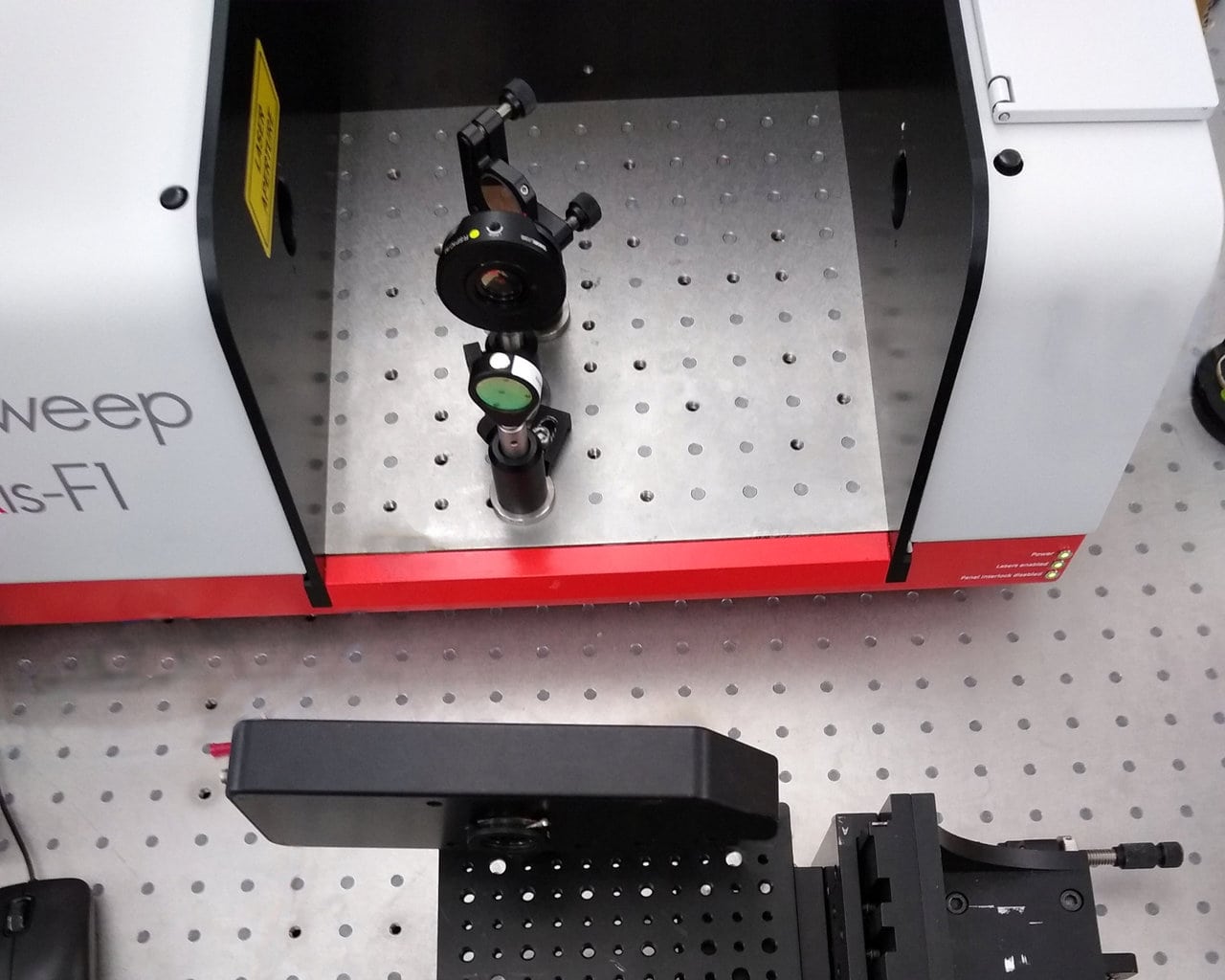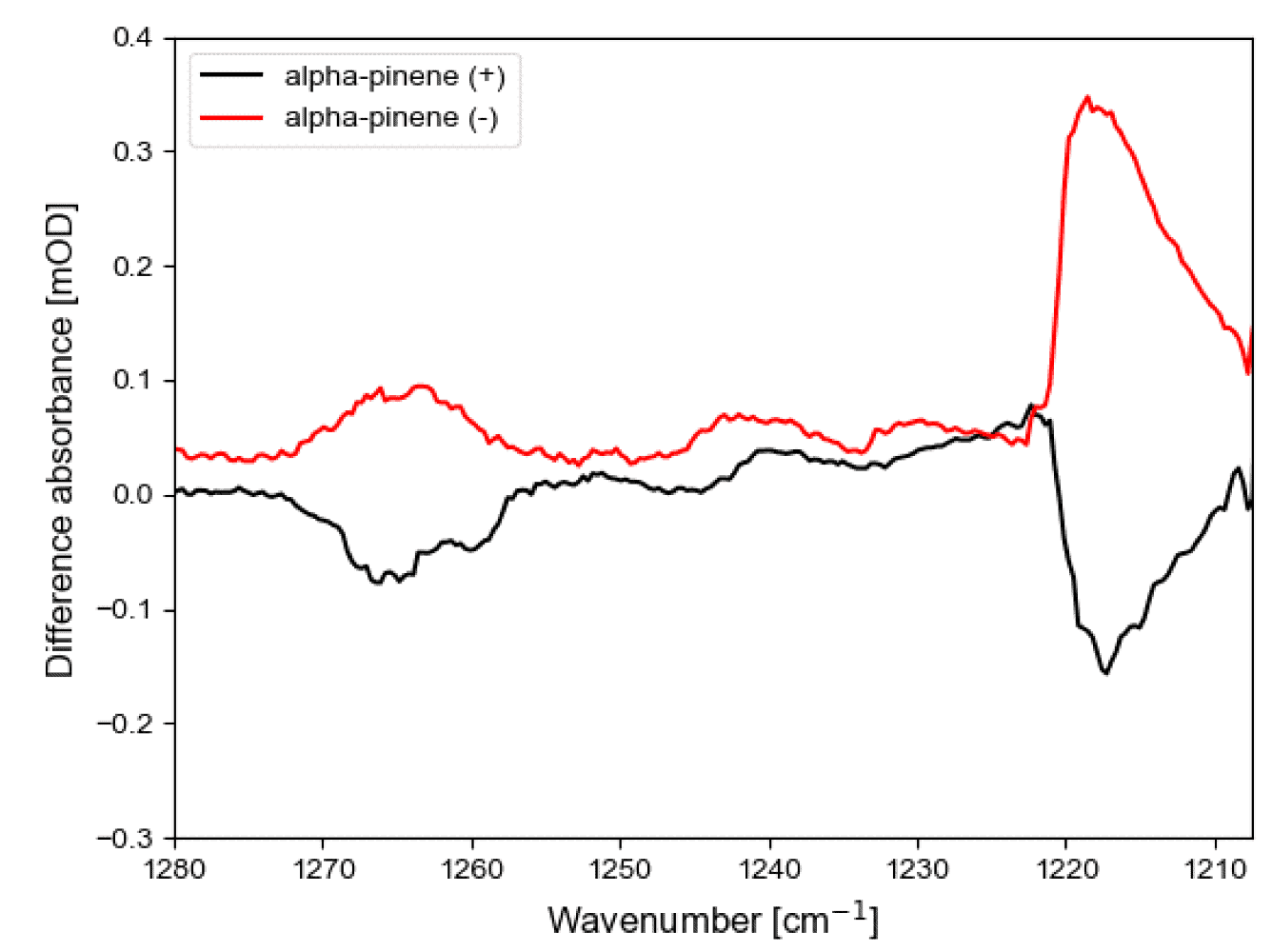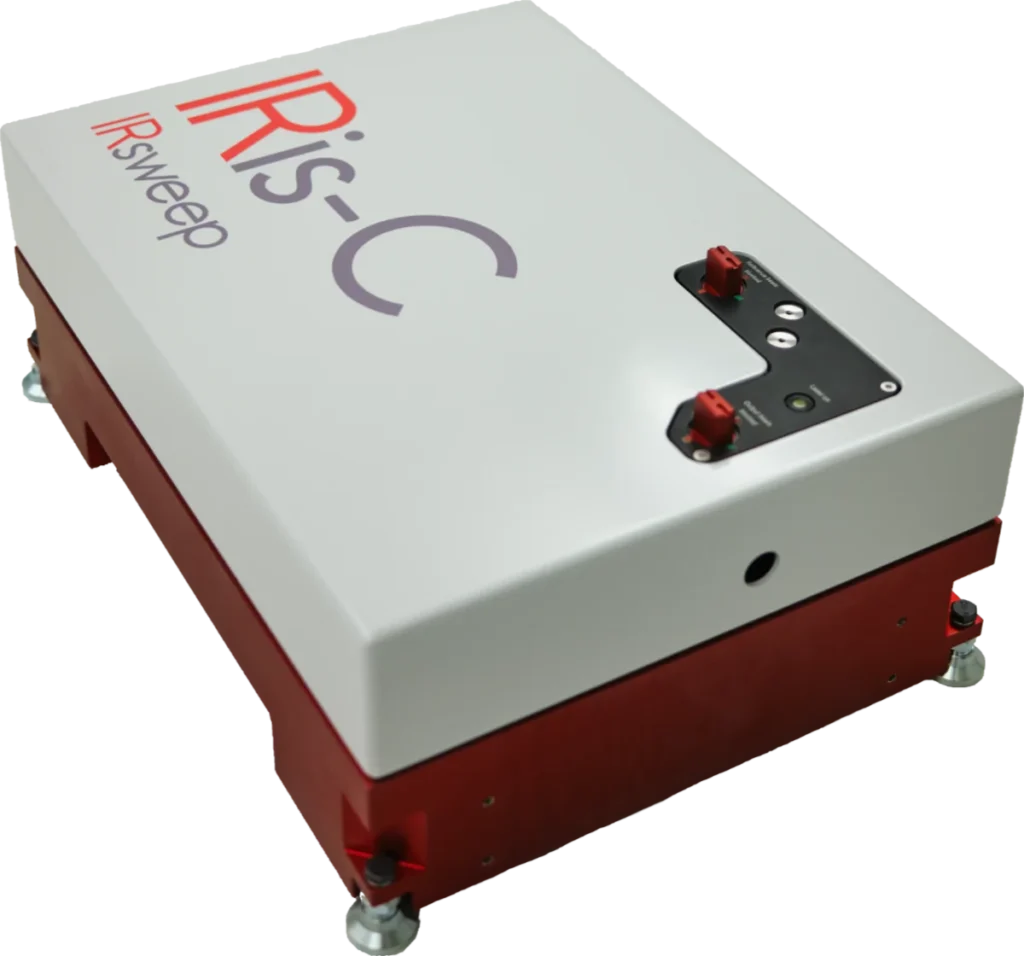
Vibrational Circular Dichroism (VCD) is a commonly used technique to analyze the stereochemistry of chemical substances. It is further widely used to observe minute changes in the secondary or tertiary structure of biological macromolecules. Unfortunately, measurements of VCD spectra are a very time consuming task due to long acquisition times of the employed FTIR or dispersive spectrometers. Therefore, sweeping over experimental parameters sweeps or high sample throughput are generally not possible.
Dual-comb spectroscopy (DCS) allows for simultaneous acquisition of hundreds of wavelengths within microsecond measurement times. This allows for parallel observation of the circular dichroism at many wavelengths and leads to a massive reduction of the time needed to acquire a VCD spectrum. As a benchmark study, we have measured the VCD spectra of (+) and (-) alpha-pinene (see Figure 1). Each of the two measurements use a total integration time of less than 2 seconds.

DCS further opens new possibilities for high-resolution VCD. Thanks to the stable emission of the frequency combs, VCD measurements with spectral resolution better than 0.001 cm-1 can be achieved. This makes the observation of narrow VCD features of gaseous substances possible.
Overall, DCS has the potential to revolutionize vibrational circular dichroism. High sample throughput, parameter sweeps, and high-resolution VCD are some of the exciting new possibilities that the IR-F1 can offer in VCD.



